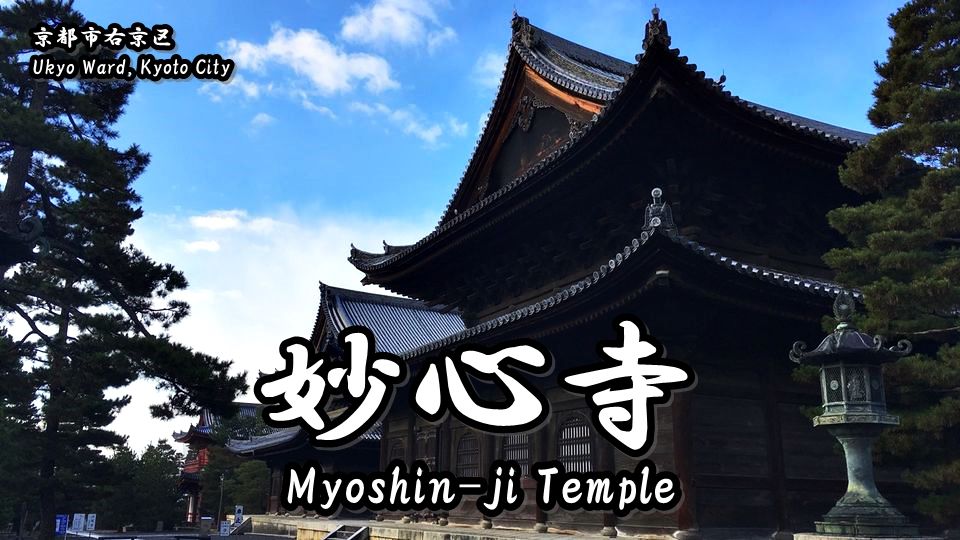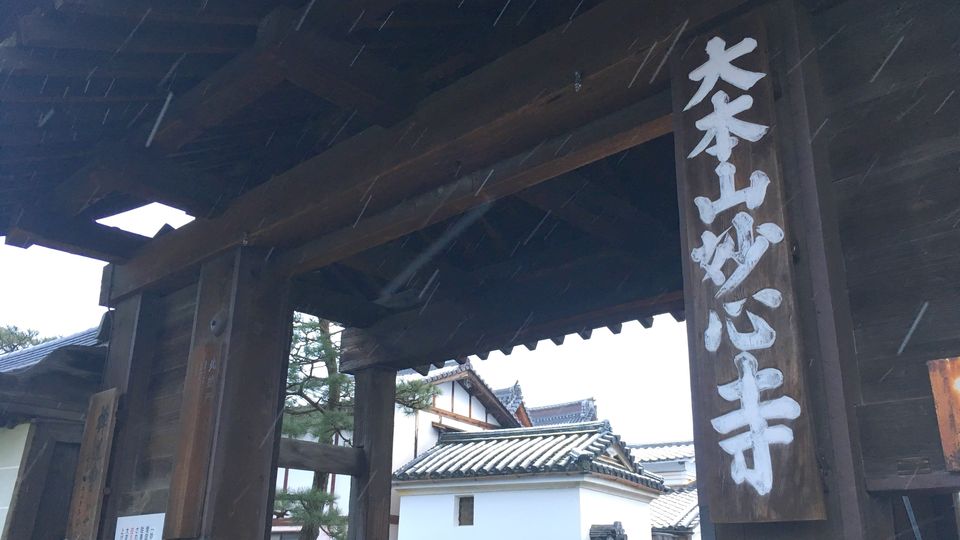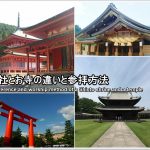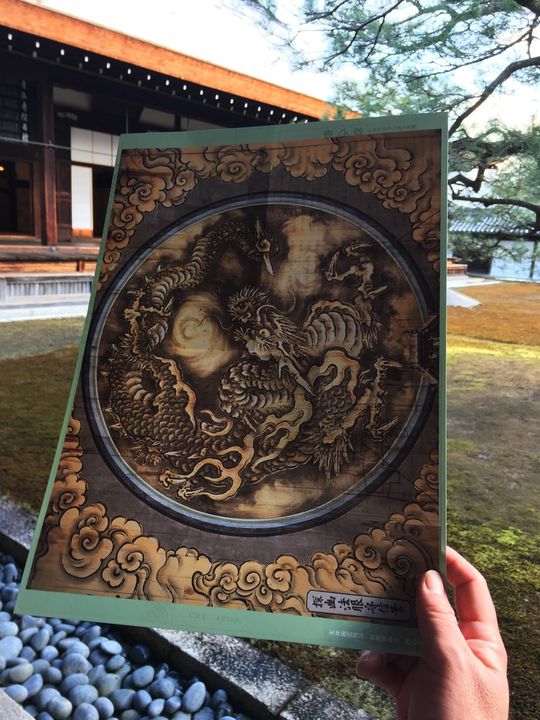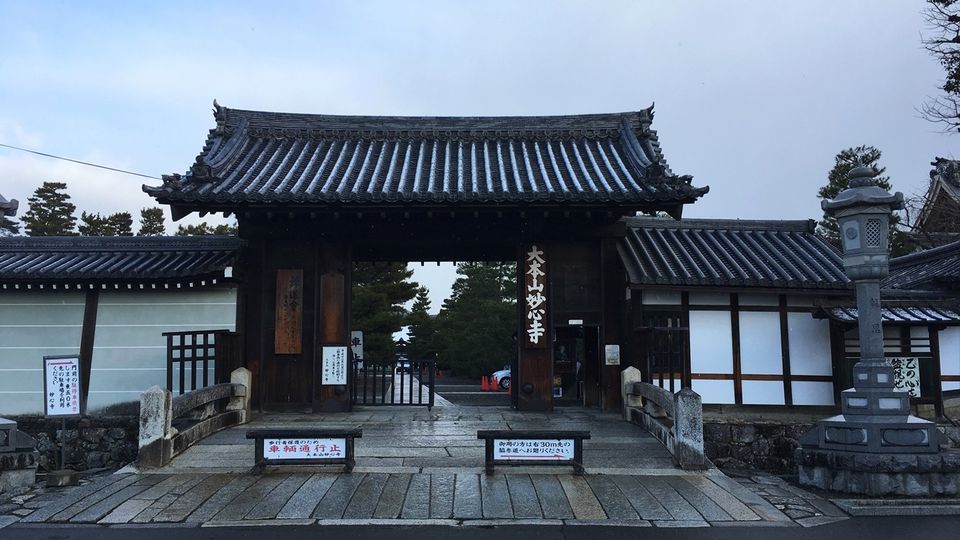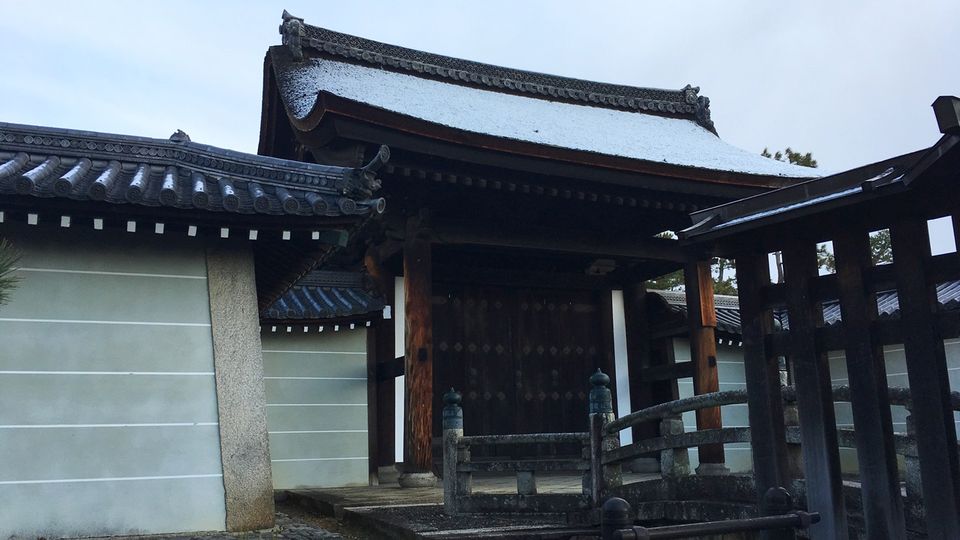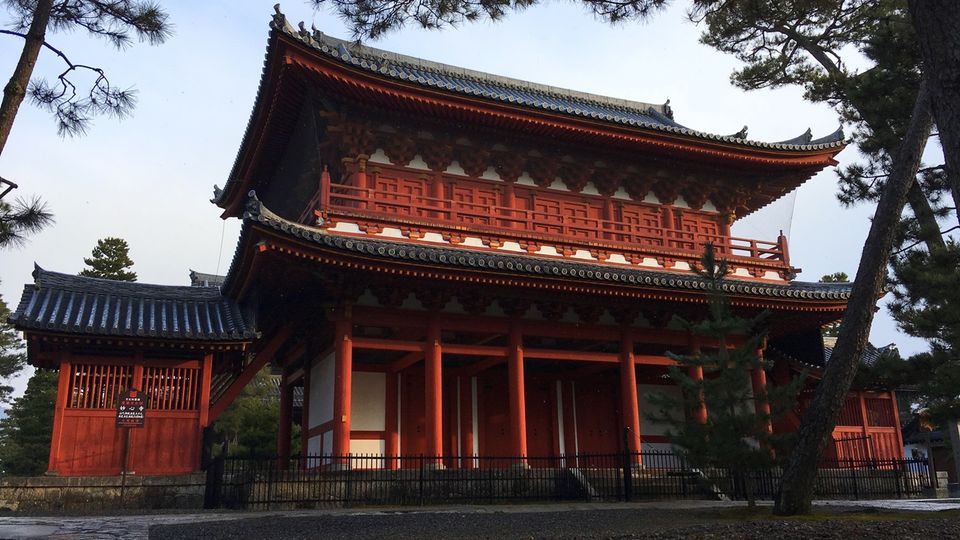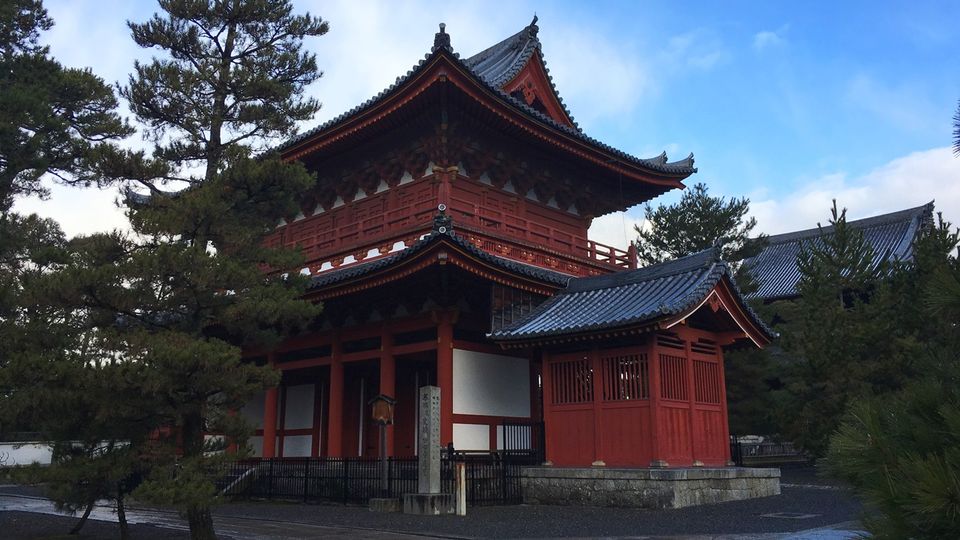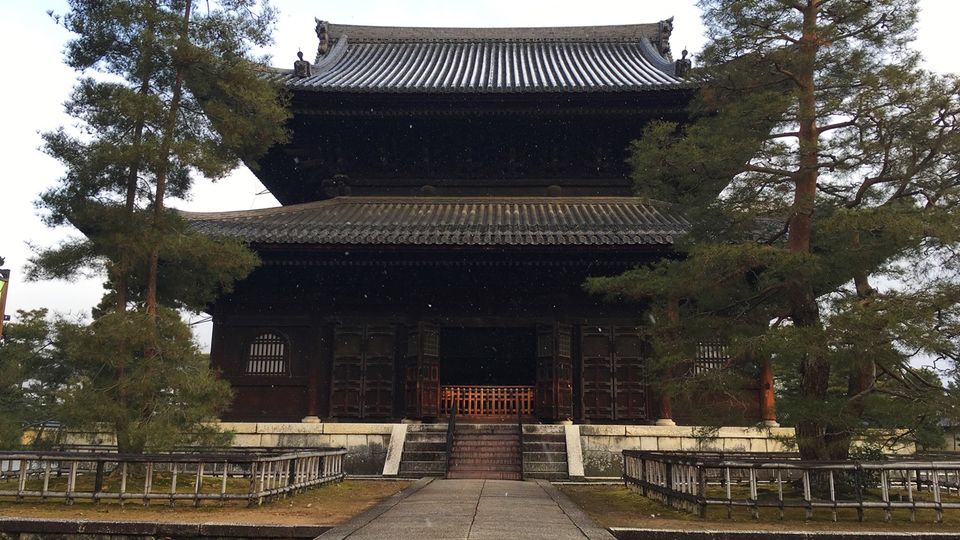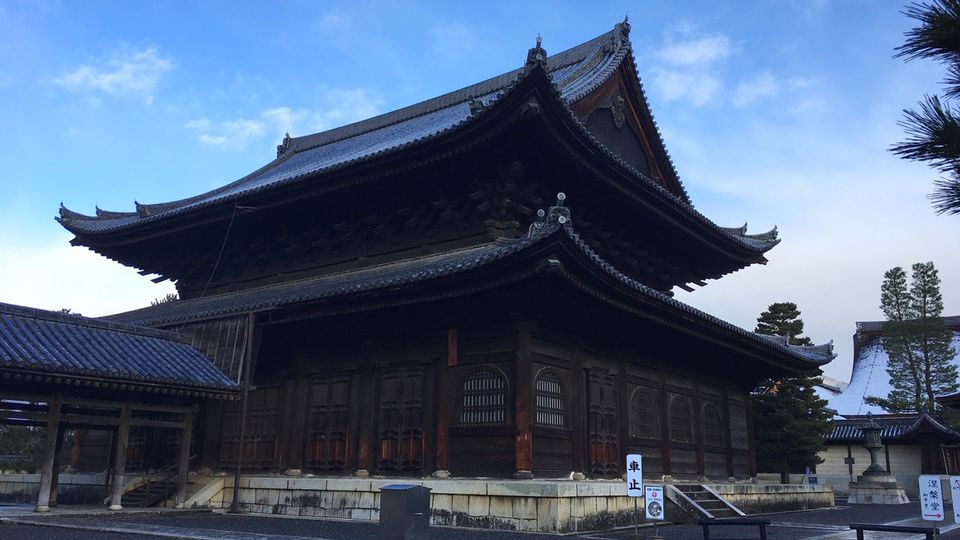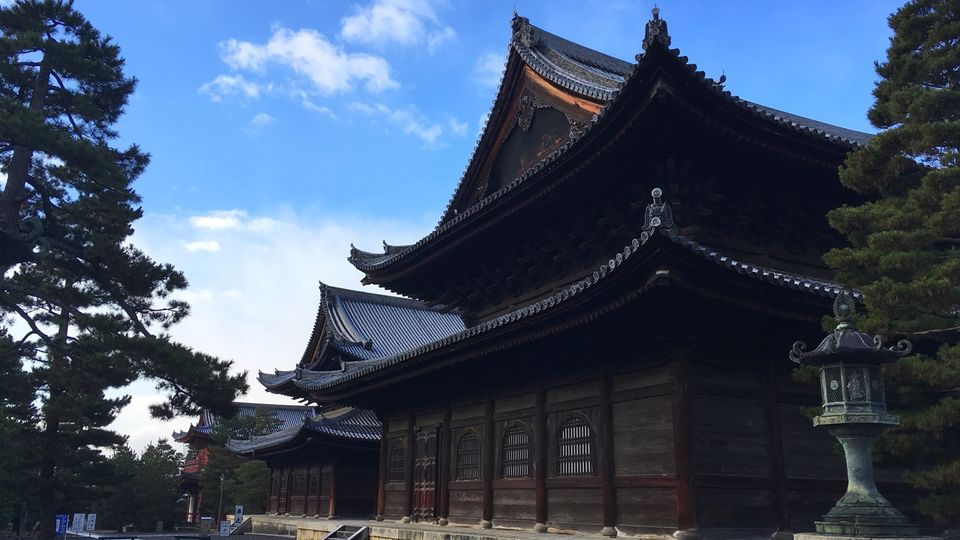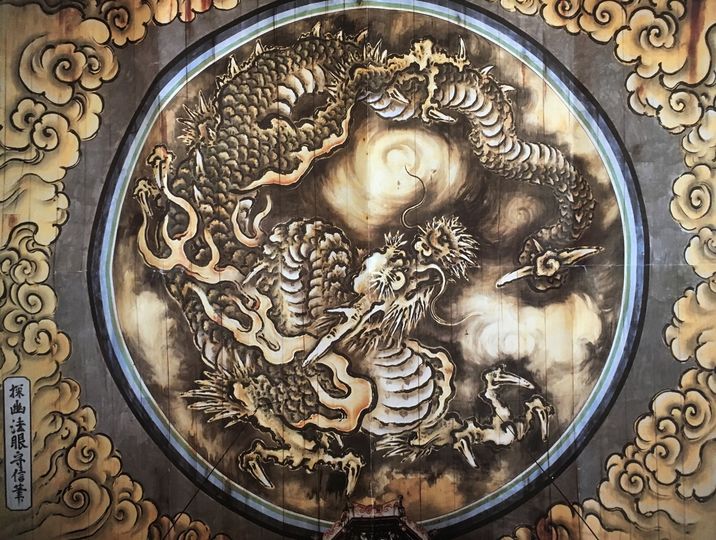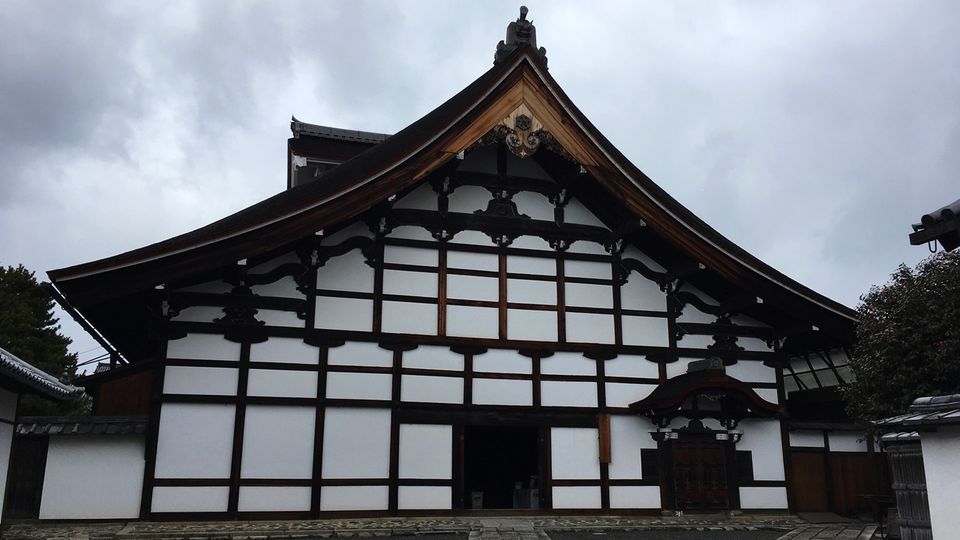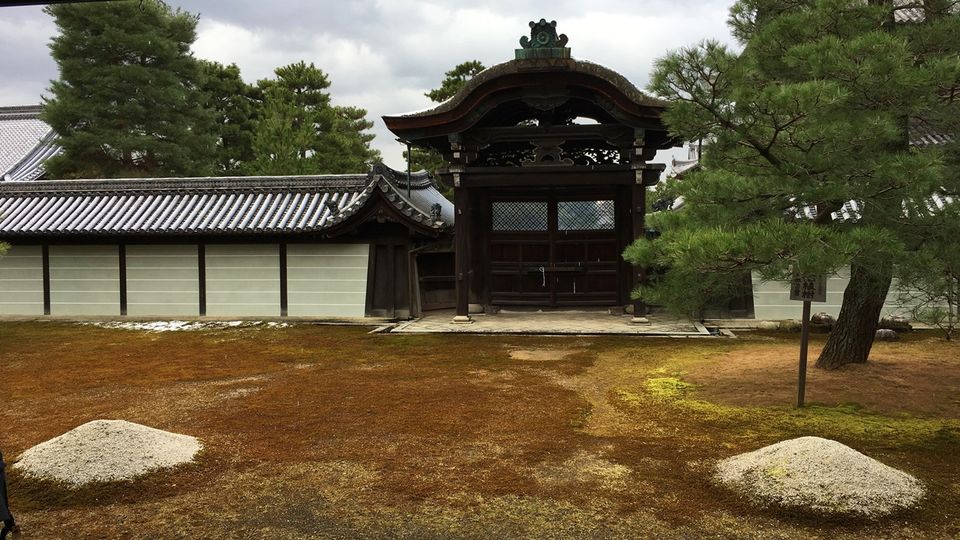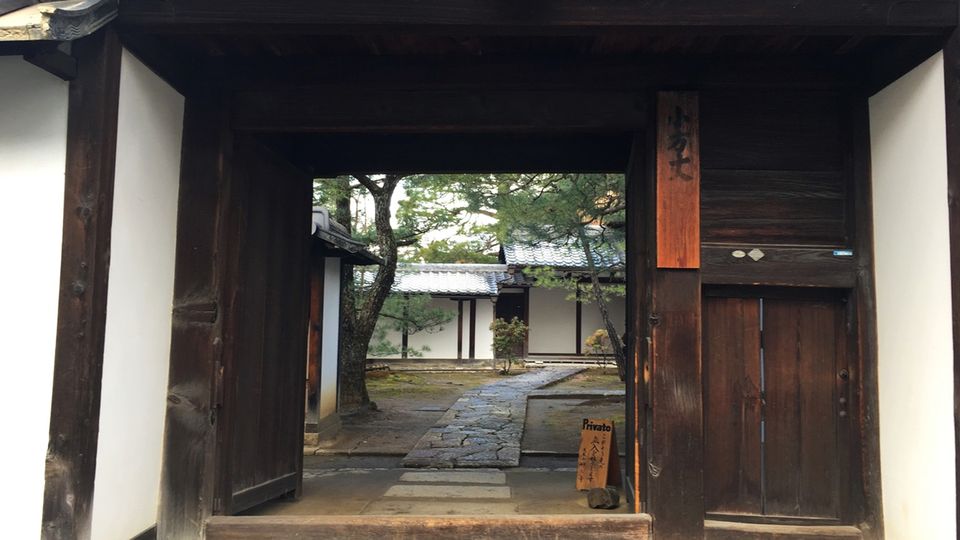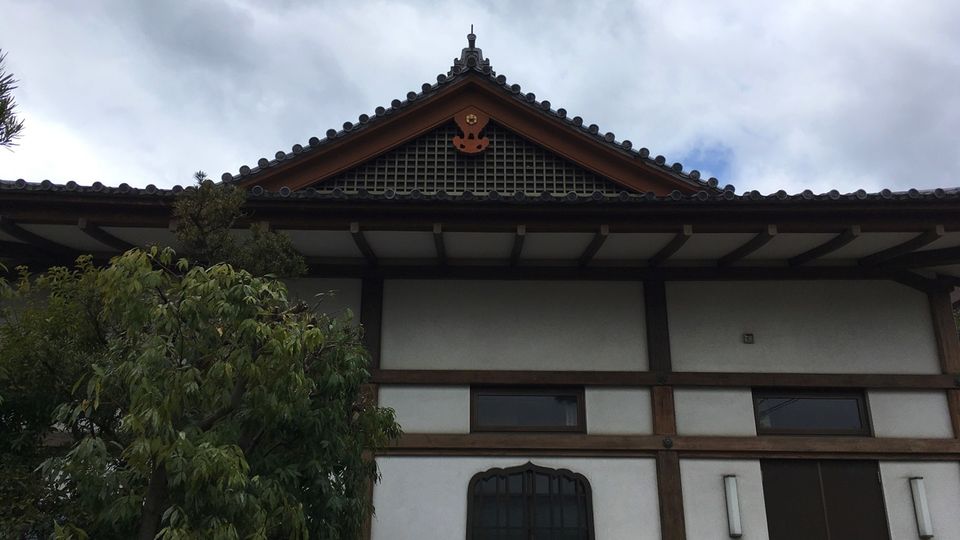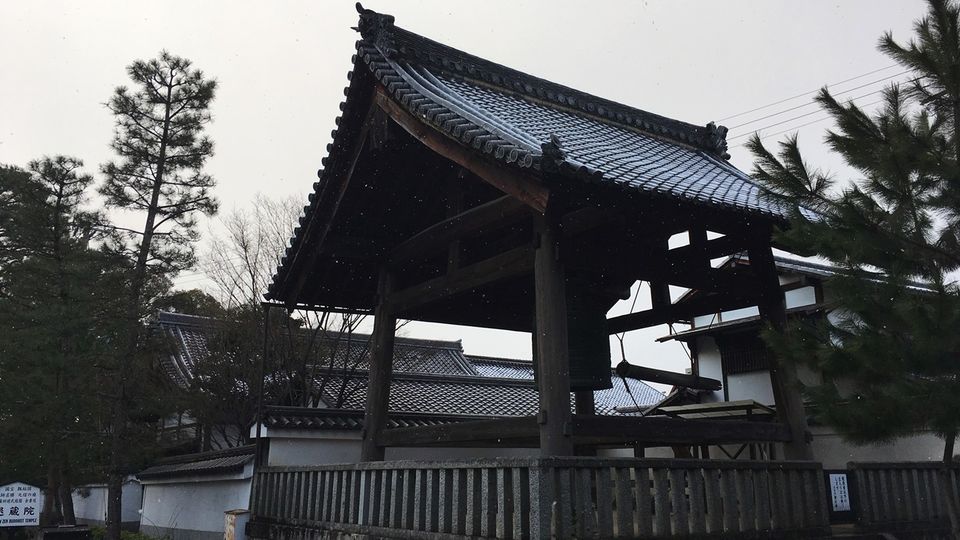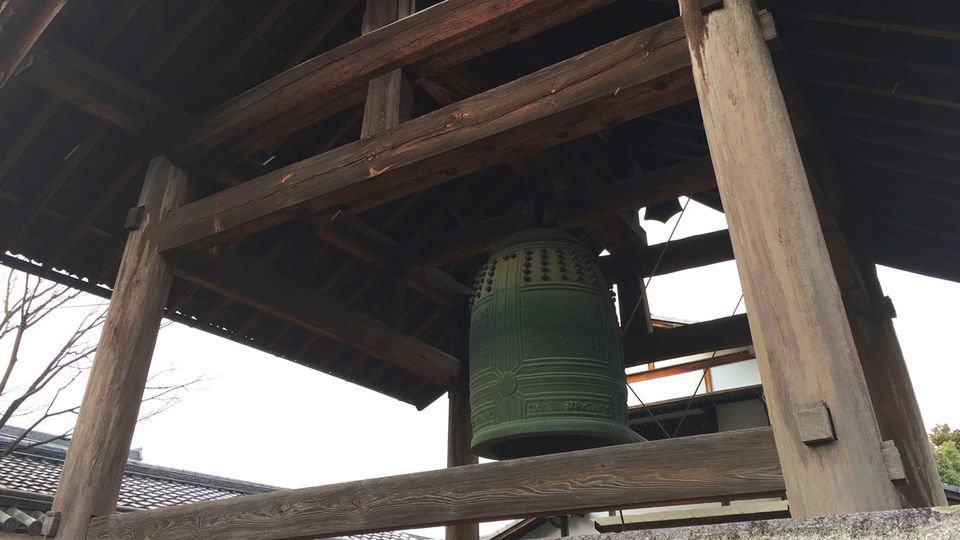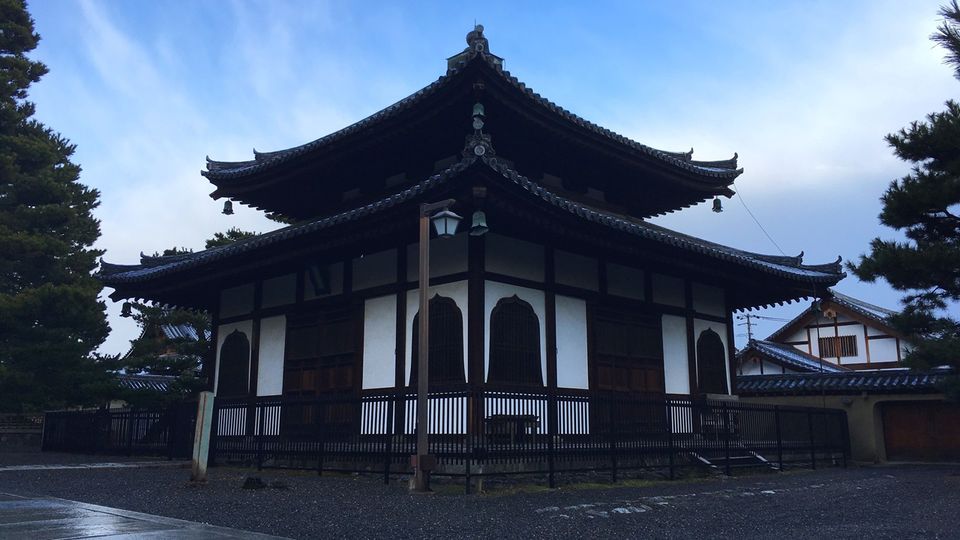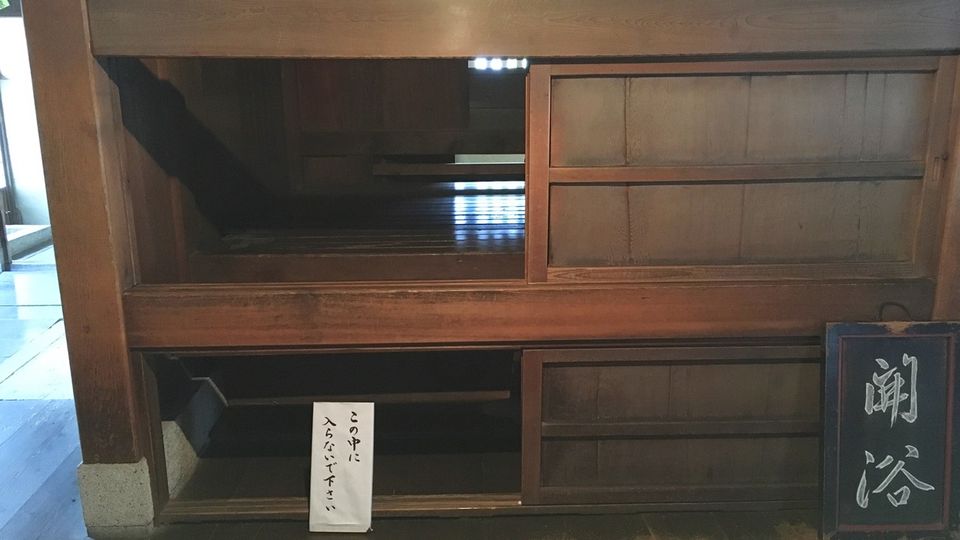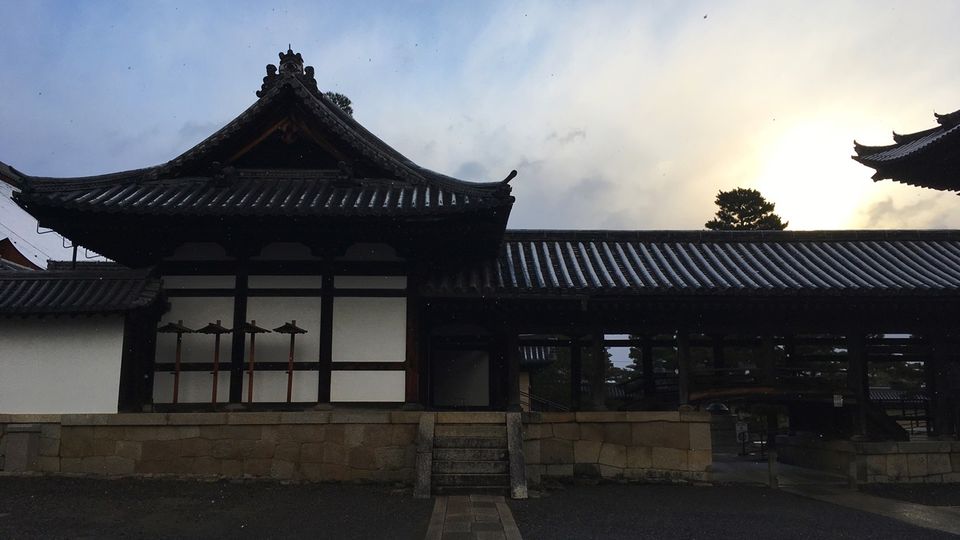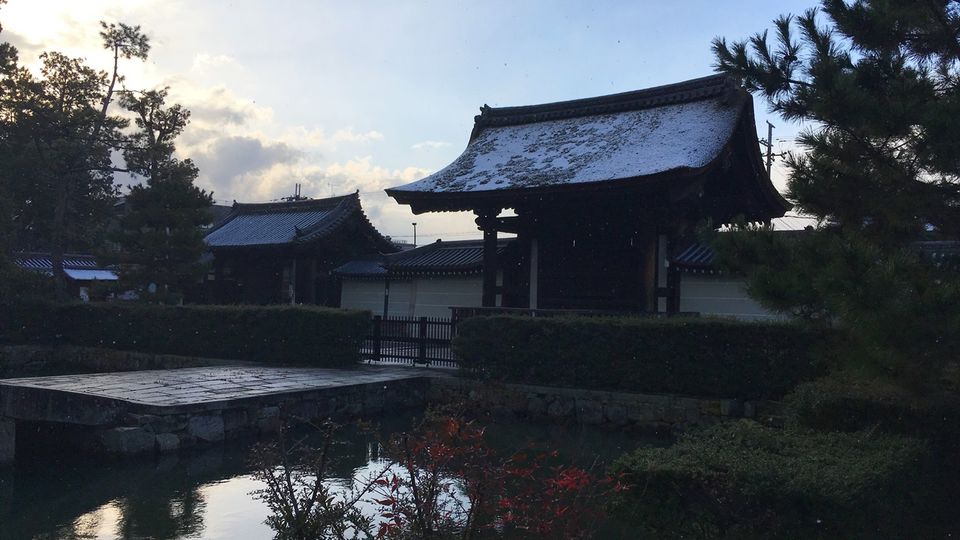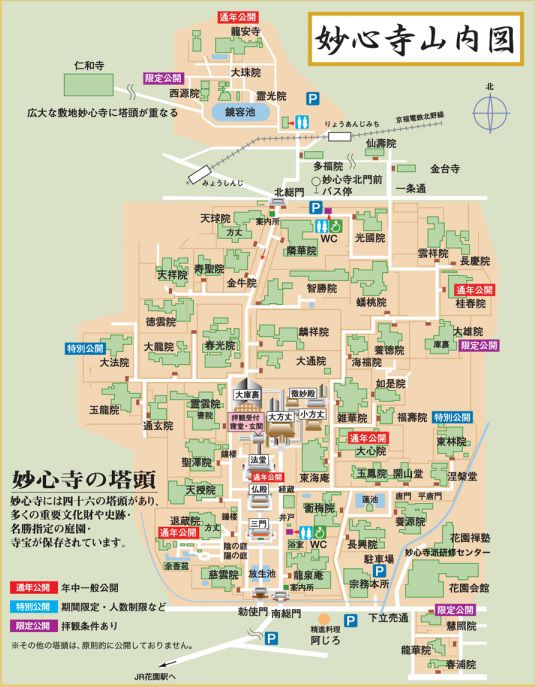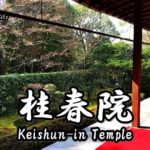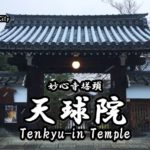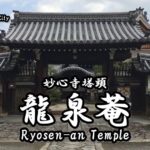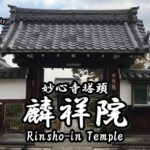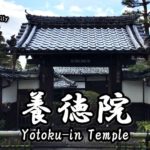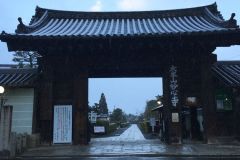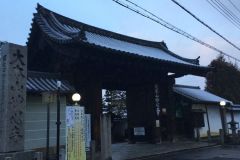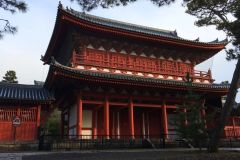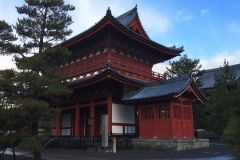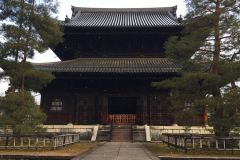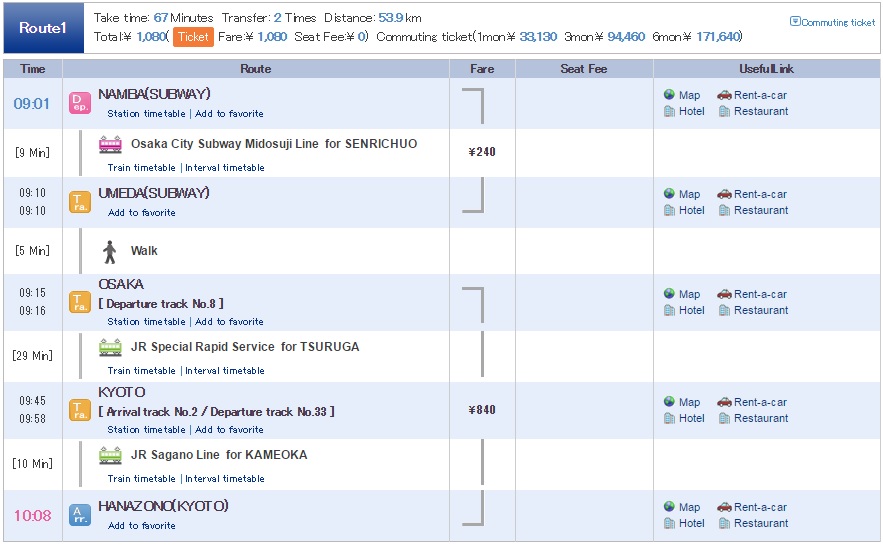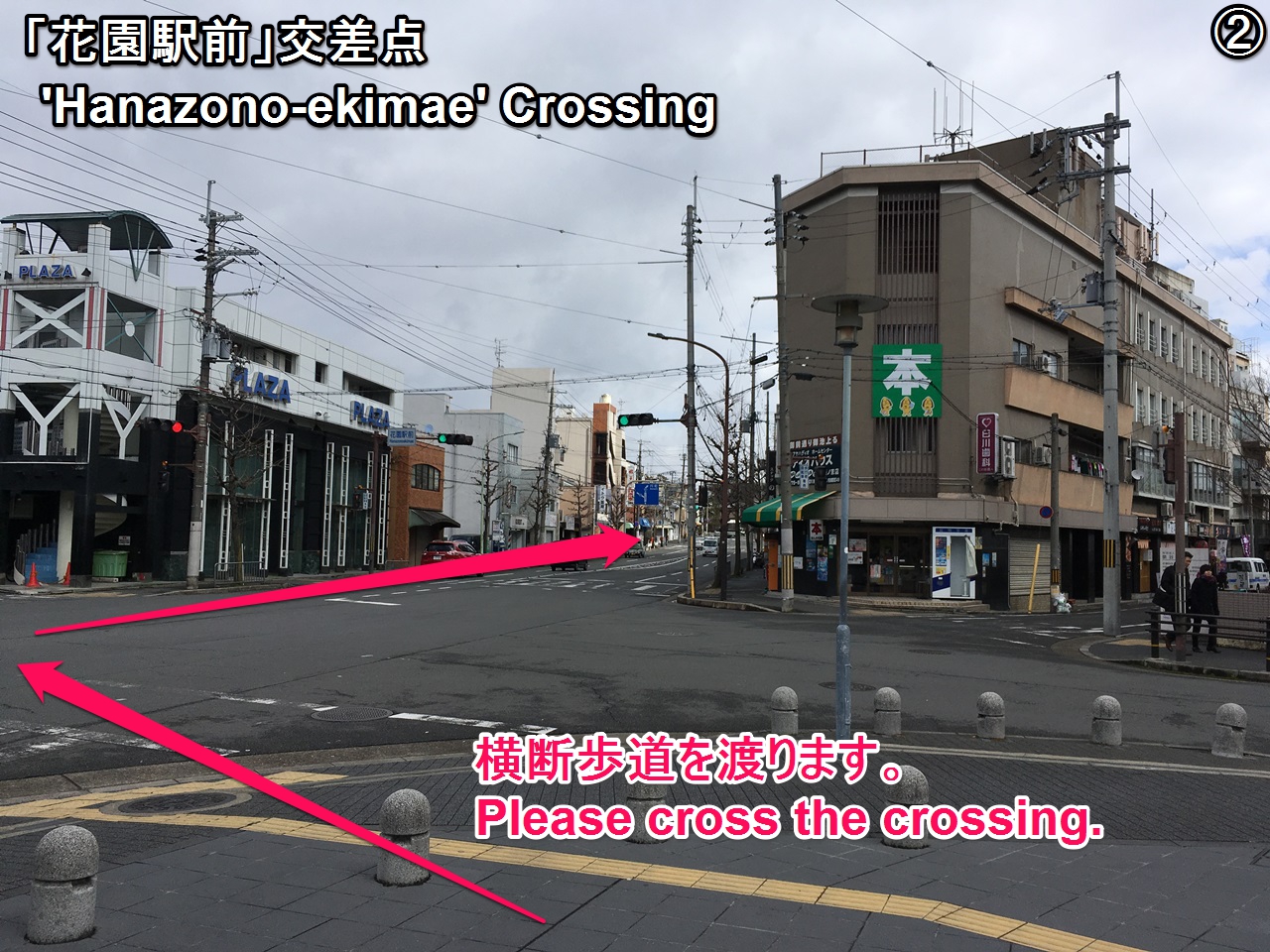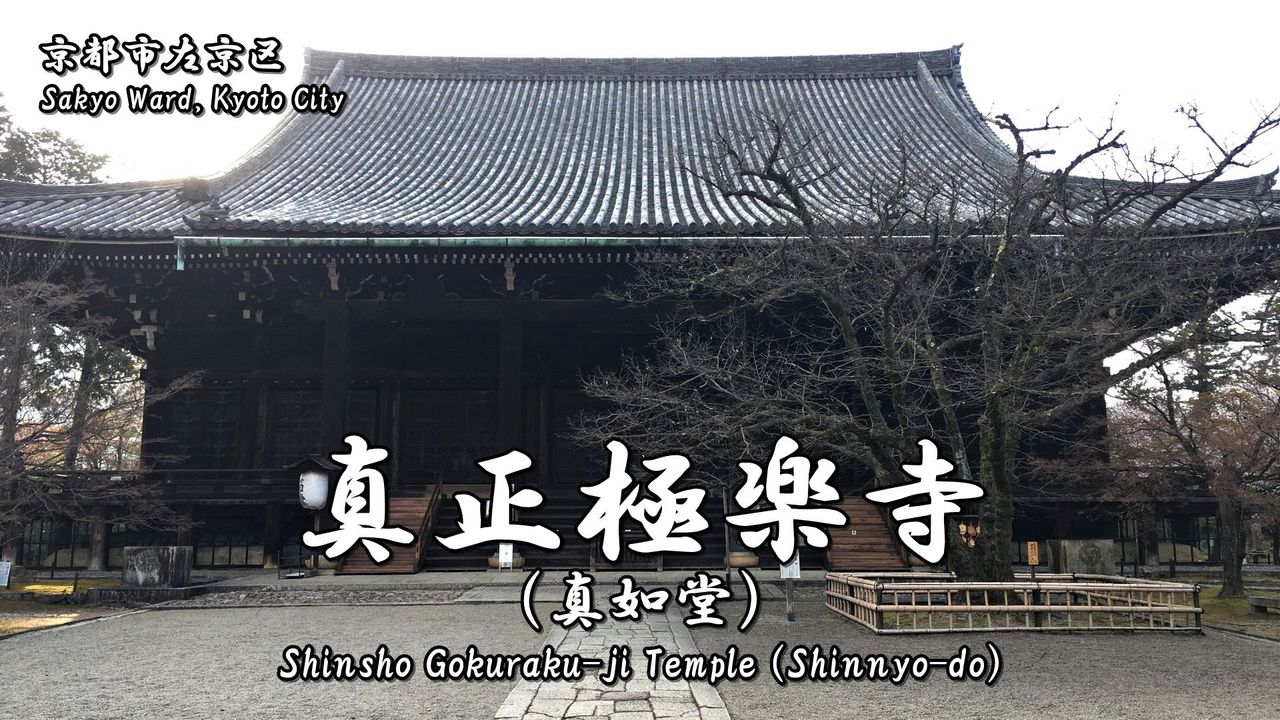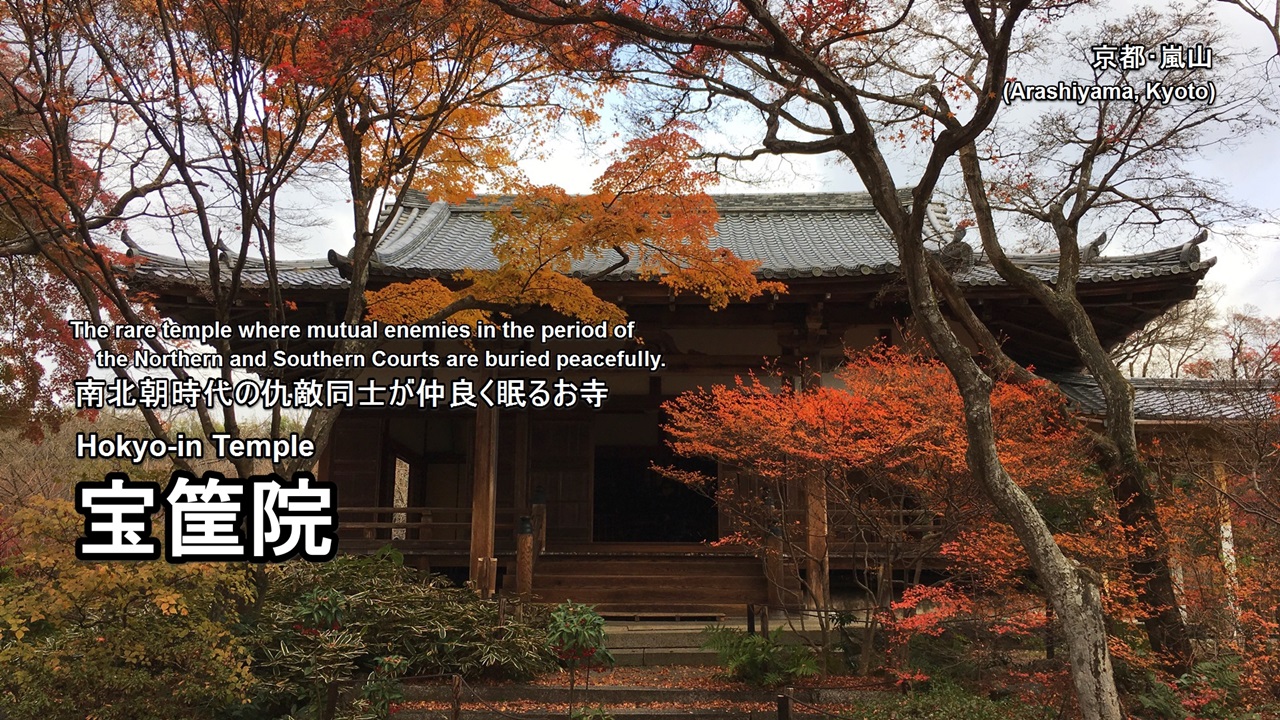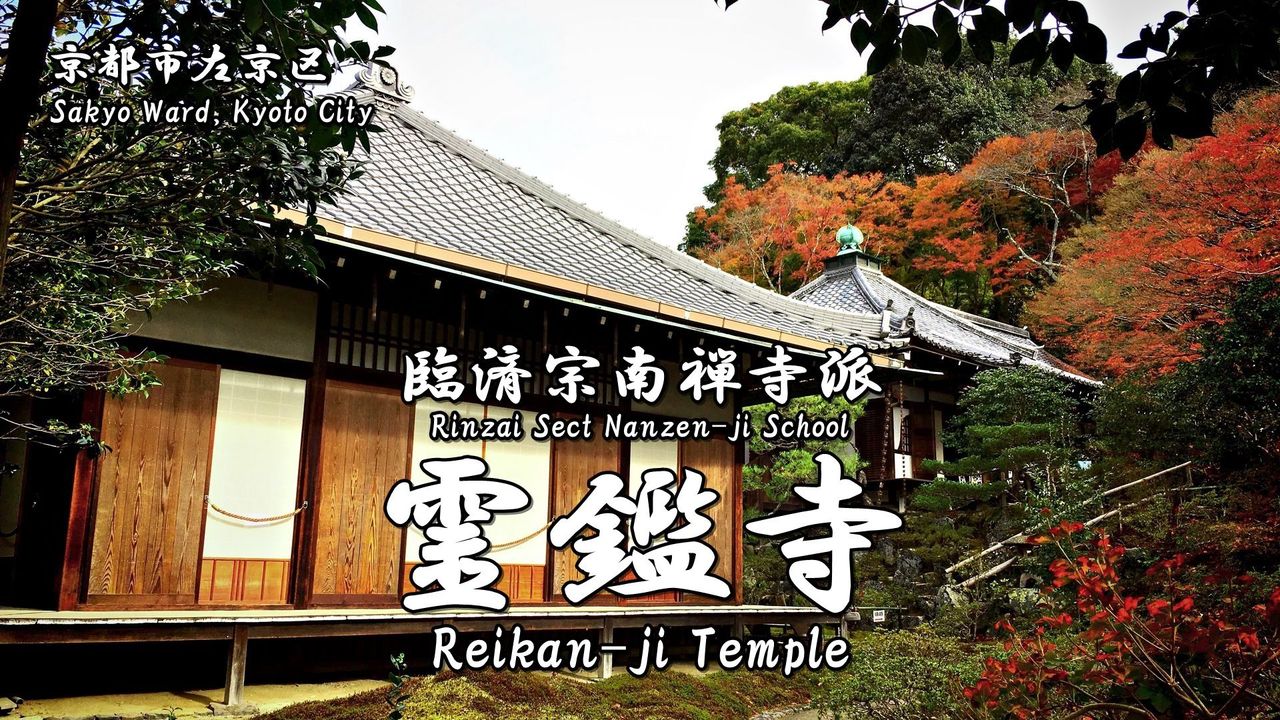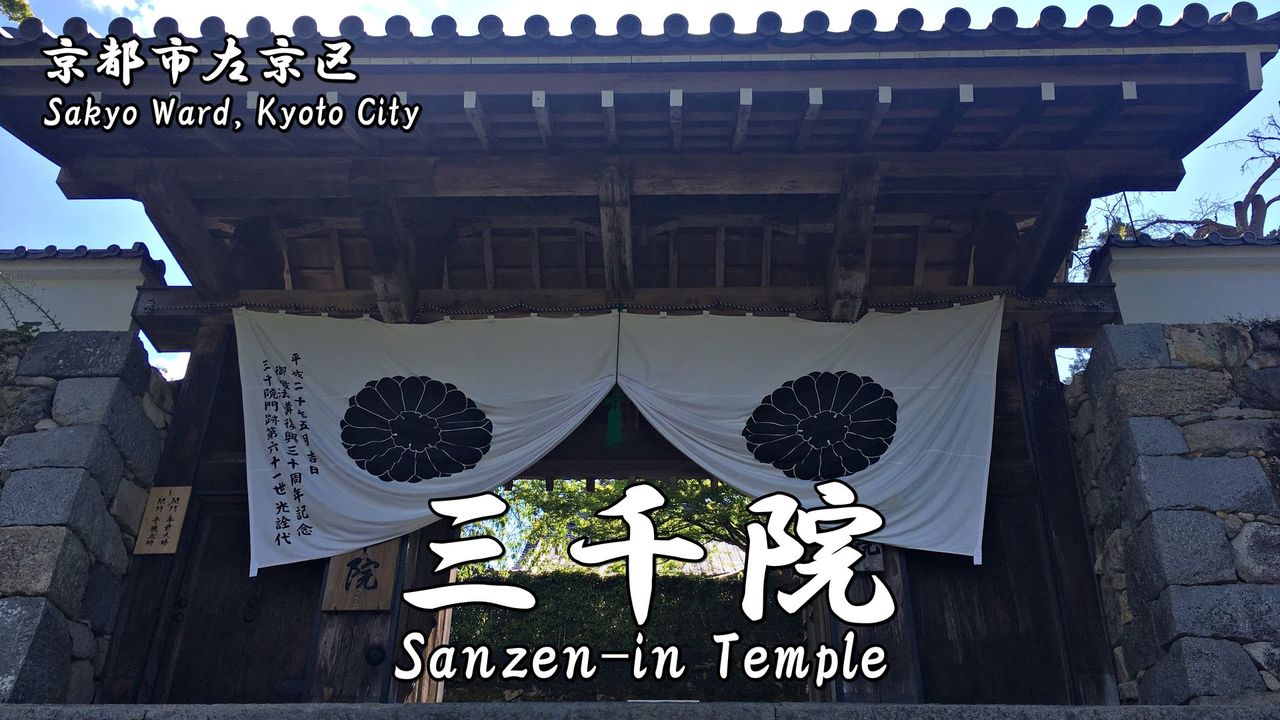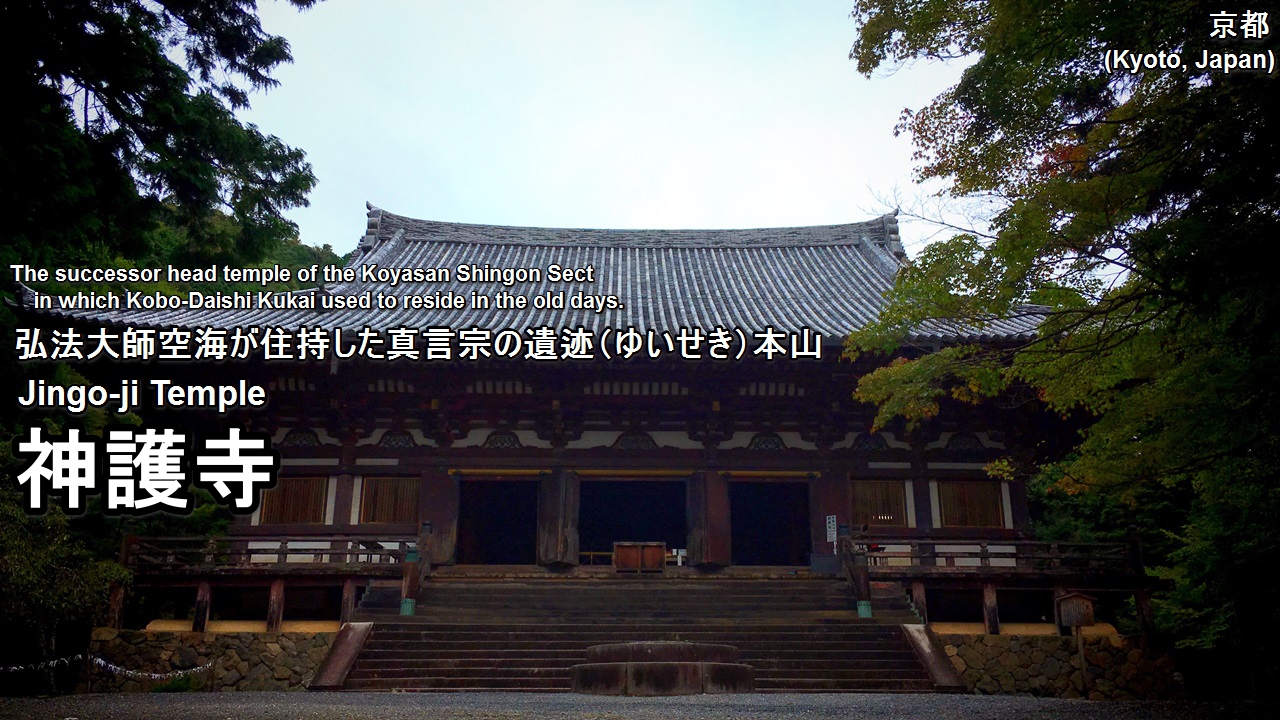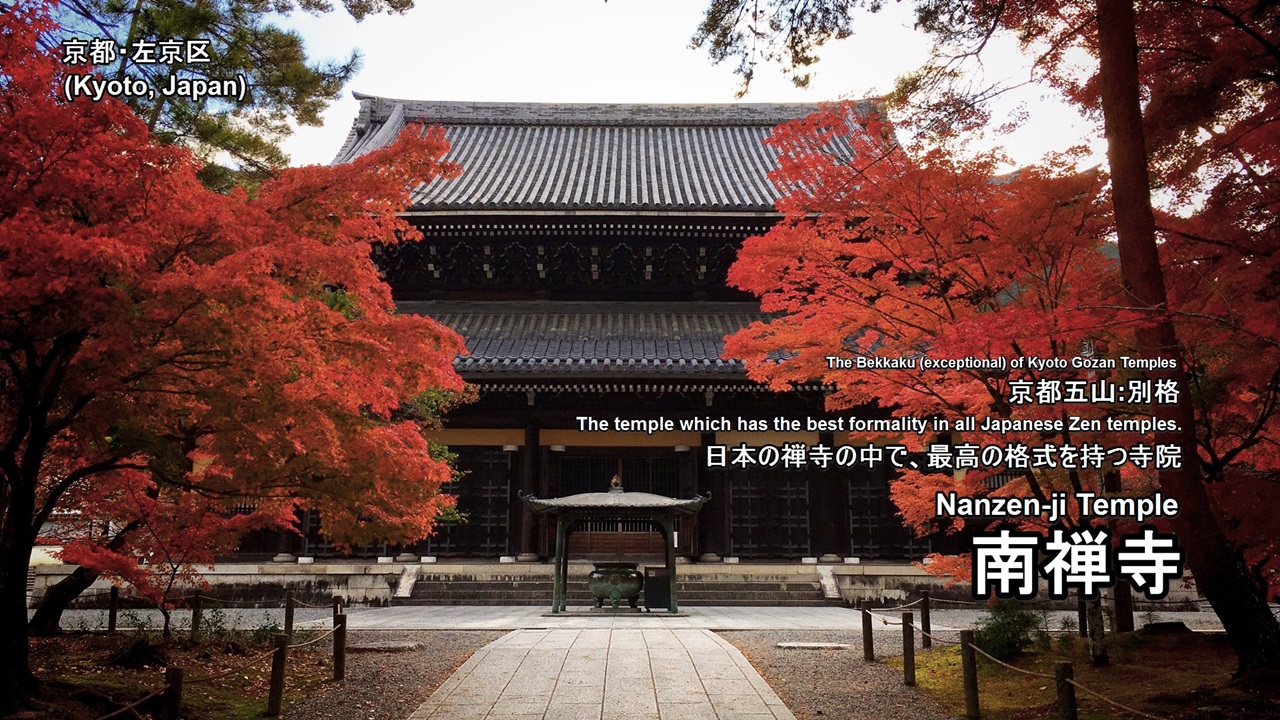Myoshin-ji (妙心寺) is located in Hanazono, Ukyo Ward, Kyoto City, is the head temple of the Rinzai sect Myoshin-ji School of Zen Buddhism.
It is one of the biggest Zen temple in Japan!
Of the approximately 6,000 Rinzai sect temples in Japan, around 3,500 belong to the Myoshin-ji School.
Precincts of this temple have been designated as a historic site, a place of scenic beauty and Michelin green guide ★/★★.
History of Myoshin-ji
Let’s study the history of this temple with me before introducing of Myoshin-ji (妙心寺).
I think that we can enjoy the sightseeing of this temple more by learning the history of it. XD
In old days, there was a villa of the Retired Emperor Hanazono (花園天皇) named ‘Hagiwara-dono (萩原殿)’ in the precinct of this temple.
Because he was a believer of Zen Buddhism (禅宗), that imperial villa was rebuilt in 1337 and became the Myoshin-ji.
And this temple greeted Kanzan Egen(関山慧玄) who was a Rinzai sect Buddhist monk to the first chief priest.
Well, do you know ‘Five Mountain System of the Rinzai Sect’?
It was a system of the status of a Buddhist temple established by the Muromachi bakufu (室町幕府).
And it had a deep relationship with the Japanese Zen temples such as Myoshin-ji.
Why was there such a system?
The reasons are as follows.
‘Muromachi bakufu wanted to control a temple which had strong powers.’
However, there were temples which objected to the system.
One of these temple is Myoshin-ji.
Therefore Myoshin-ji has angered the Muromachi bakufu.
For that reason, the Muromachi bakufu confiscated Myoshin-ji Temple’s territory in 1399.
Afterwards, when the sixth Shogun, Yoshinori ASHIKAGA (足利義教), a territory of the temple was returned in 1432.
It fell into deterioration due to conflicts such as the Onin War but was restored during the Sengoku period.
About Myoshin-ji
Information
Address:64, Hanazono Myoshinjicho, Ukyo-ku Kyoto-shi, Kyoto, 616-8035, Japan
Phone number:+81-75-463-3121
Foundation:1337
Founder:Kanzan Egen(関山慧玄)
Sect:Rinzai sect Myoshin-ji School (臨済宗妙心寺派)
Principal image:Shaka Nyorai (釈迦如来)
Open
| March to October | 9:10~16:40 |
| November to February | 9:10~15:40 |
Admission Fee
| Adults | 700 yen |
| Elementary / Junior high students | 400 yen |
Other information
・Please ask temple’s staff where you can take photos and videos.
・Worship method of a shinto shrine and a buddhist temple, please refer to the following article.
Next, Let’s go to see highlights of this temple with me!
Highlights of Myoshin-ji
- 南総門 (重要文化財):Minami So-mon (south) gate (Important Cultural Property)
- 勅使門 (重要文化財):Chokushi-mon gate (Important Cultural Property)
- 北総門 (重要文化財):Kita So-mon (north) gate (Important Cultural Property)
- 三門 (重要文化財):San-mon gate (Important Cultural Property)
- 仏殿 (重要文化財)*:Butsu-den hall (Important Cultural Property)*
- 法堂 (重要文化財):Hatto hall (Important Cultural Property)
- 庫裏 (重要文化財)*:Kuri (Important Cultural Property)*
- 玄関 (重要文化財):Genkan (Important Cultural Property)
- 大方丈 (重要文化財):O-Hojo (Important Cultural Property)
- 大方丈庭園 (史跡・名勝): O-Hojo garden (Historic Sites・Special Places of Scenic Beauty)
- 小方丈 (重要文化財):Ko-Hojo (Important Cultural Property)
- 小方丈庭園 (史跡・名勝)): Ko-Hojo garden (Historic Sites・Special Places of Scenic Beauty)
- 微妙殿:Mimyo-den hall
- 鐘楼:Shoro (bell tower)
- 経蔵 (重要文化財)*:Kyozo (Important Cultural Property)
- 浴室 (重要文化財)*:Yokushitsu (bathroom) (Important Cultural Property)*
- 寝堂 (重要文化財):Shin-do hall (Important Cultural Property)
- 前庭 (史跡・名勝):Front garden (Historic Sites・Special Places of Scenic Beauty)
This mark ‘*’ is a pay area.
南総門 (重要文化財):Minami So-mon (south) gate (Important Cultural Property)
Minami So-mon (south) gate was built in 1610 of the early Edo period, and has been designated as an important cultural property.
This gate has a role as the south entrance of this temple.
勅使門 (重要文化財):Chokushi-mon gate (Important Cultural Property)
Chokushi-mon gate was built in 1610 of the early Edo period, and has been designated as an important cultural property.
北総門 (重要文化財):Kita So-mon (north) gate (Important Cultural Property)
Kita So-mon (south) gate was built in 1610 of the early Edo period, and has been designated as an important cultural property.
This gate has a role as the north entrance of this temple.
三門 (重要文化財):San-mon gate (Important Cultural Property)
San-mon gate was built in 1599 of the late Azuchi–Momoyama period, and has been designated as an important cultural property.
This is the only rokaku-style (multi-storied gate) architecture painted in vermillion in this temple.
Statue of Kannon Bosatsu and 16 Rakans are enshrined in this gate.
仏殿 (重要文化財)*:Butsu-den hall (Important Cultural Property)*
Butsu-den hall was built in 1583 of the Azuchi–Momoyama period, and has been designated as an important cultural property.
Statue of Shaka Nyorai (釈迦如来) which is the principal image of this temple is enshrined in this building.
法堂 (重要文化財):Hatto hall (Important Cultural Property)
Hatto hall was built in 1656 of the Edo period, and has been designated as an important cultural property.
Very large Unryu-zu (painting of dragon and clouds) which was designed by Tanyu KANO (狩野探幽) is drawn on the ceiling of this building.
庫裏 (重要文化財)*:Kuri (Important Cultural Property)*
Kuri was built in 1653 of the Edo period, and has been designated as an important cultural property.
It has a roles as the priest’s living quarters or the kitchen of this temple.
玄関 (重要文化財):Genkan (Important Cultural Property)
Genkan was built in 1654 of the Edo period, and has been designated as an important cultural property.
This structure has a role as the entrance of the O-Hojo.
大方丈 (重要文化財):O-Hojo (Important Cultural Property)
O-Hojo (large hojo architecture) was built in 1654 of the Edo period, and has been designated as an important cultural property.
大方丈庭園 (史跡・名勝): O-Hojo garden (Historic Sites・Special Places of Scenic Beauty)
O-Hojo garden has been designated as a historic site and a place of scenic beauty.
小方丈 (重要文化財):Ko-Hojo (Important Cultural Property)
Ko-Hojo (small hojo architecture) was built in 1654 of the Edo period, and has been designated as an important cultural property.
It is not open to the public.
小方丈庭園 (史跡・名勝): Ko-Hojo garden (Historic Sites・Special Places of Scenic Beauty)
Ko-Hojo garden has been designated as a historic site, a place of scenic beauty.
微妙殿:Mimyo-den hall
Mimyo-den hall was built in 1981 of the Showa period.
Buddhist memorial services are held in this building.
鐘楼:Shoro (bell tower)
Shoro (bell tower) was built in 1696 of the Edo period.
The first bell in Myoshin-ji has an inscription of the year of 698 on the inner side and this is the oldest Japanese temple bell with a confirmed production date.
So it has been designated as a national treasure, is kept now in the Hatto hall.
Therefore, the current bell is the second generation.
経蔵 (重要文化財)*:Kyozo (Important Cultural Property)
Kyozo was built in 1674 of the Edo period, and has been designated as an important cultural property.
Rinzo (a warehouse to store Buddhist scriptures) is kept in this building.
浴室 (重要文化財)*:Yokushitsu (bathroom) (Important Cultural Property)*
Yokushitsu (bathroom) was built in 1656 of the Edo period, and has been designated as an important cultural property.
There is a sauna made of the hinoki tree (a Japanese cypress) in this building.
Bathing (to cleanse the body) for the Zen is one of the important ascetic practices.
寝堂 (重要文化財):Shin-do hall (Important Cultural Property)
Shin-do hall was built in 1656 of the Edo period, and has been designated as an important cultural property.
It is connected to the Hatto hall by a corridor.
So, it has the role as a waiting room of the Hatto hall.
前庭 (史跡・名勝):Front garden (Historic Sites・Special Places of Scenic Beauty)
There is a pond called Hojo-ike in the front garden of Myoshin-ji.
This garden has been designated as a historic site, a place of scenic beauty.
Tatchu (sub-temples) of Myoshin-ji
Myoshin-ji has a total of 48 sub-temples.
I introduce some of these sub-temples here.
■Taizo-in Temple
■Keishun-in Temple
■Tenkyu-in Temple (Only open to the public on specific days)
■Ryosen-an Temple (Only open to the public on specific days)
■Rinsho-in Temple (Only open to the public on specific days)
■Yotoku-in Temple (Only open to the public on specific days)
■Daio-in Temple (Only open to the public on specific days)
Photos of Myoshin-ji
Goshuin (red ink stamp) of Myoshin-ji
Goshuin of this temple is “Shaka Nyorai (釈迦如来)” which is the principal image of this temple.
We can get this goshuin in the reception desk of O-Hojo. (300 yen)
How to get to Myoshin-ji
Nearest station is JR Hanazono Station or Randen Kitano Line Myoshin-ji Station.
We can also go by bus from ‘JR Kyoto Station’, ‘Hankyu Kawaramachi Station’, and ‘Keihan Gion-Shijo Station’.
From Osaka Sta. to Hanazono Sta. (by train)
Timetable and Route Search (train)
1.Get on the JR Kyoto Line from Osaka Station to Kyoto Station and change to the JR Sagano Line.
2.Get on the JR Sagano Line from Kyoto Station to Hanazono Station.
From Namba Sta. to Hanazono Sta. (by train)
Timetable and Route Search (train)
1.Get on the Osaka Metro Midosuji-Line from Namba Station to Umeda Station and change to the JR Kyoto Line.
2.Get on the JR Kyoto Line from Osaka Station to Kyoto Station and change to the JR Sagano Line.
3.Get on the JR Sagano Line from Kyoto Station to Hanazono Station.
From Kyoto Sta. to Hanazono Sta. (by train)
Timetable and Route Search (train)
1.Get on the JR Sagano Line from Kyoto Station to Hanazono Station.
From JR Hanazono Station (on foot)
It’s about 6 minutes (400m) on foot.
From Myoshinji Station (on foot)
It’s about 5 minutes (300m) on foot.
Get on a bus from JR Kyoto Station
Timetable and Route Search (bus)
Please get on a Kyoto City Bus No.26 (Kyoto Sta.[D3]) and get off Myoshinji Kitamon-mae (Myoshinji Temple).
Bus company:Kyoto City Bus
Routes/Destination:26/Bound for Omuro Ninnaji Temple
Boarding bus stop:Kyoto Sta.[D3]
Alighting bus stop:Myoshinji Kitamon-mae (Myoshinji Temple)
Bus fare:230 yen
Get on a bus from Kyoto Kawaramachi Station
Timetable and Route Search (bus)
Please get on a Kyoto City Bus No.10 (Shijo Kawaramachi [A]) and get off Myoshinji Kitamon-mae (Myoshinji Temple).
Bus company:Kyoto City Bus
Routes/Destination:10/Bound for Kitano-tenmangu Shrine
Boarding bus stop:Shijo Kawaramachi [A]
Alighting bus stop:Myoshinji Kitamon-mae (Myoshinji Temple)
Bus fare:230 yen
Time required:About 43 min
Get on a bus from Gion-Shijo Station
Timetable and Route Search (bus)
Please get on a Kyoto City Bus No.10 (Shijo Keihan-mae [C]) and get off Myoshinji Kitamon-mae (Myoshinji Temple).
Bus company:Kyoto City Bus
Routes/Destination:10/Bound for Kitano-tenmangu Shrine
Boarding bus stop:Shijo Keihan-mae [C]
Alighting bus stop:Myoshinji Kitamon-mae (Myoshinji Temple)
Bus fare:230 yen
Time required:About 40 min
Take a taxi
From Kyoto Station:about 3,000 yen (20 minutes)
From Gion-Shijo Station:about 2,800 yen (15 minutes)
・Let’s show a taxi driver the following phrase.
・If you want to call a taxi, let’s show the following phrase.
Phone number of taxi dispatch (Kyoto Station)
Hotel search & reservation around Myoshin-ji
How did you like it?
Have a nice trip!

